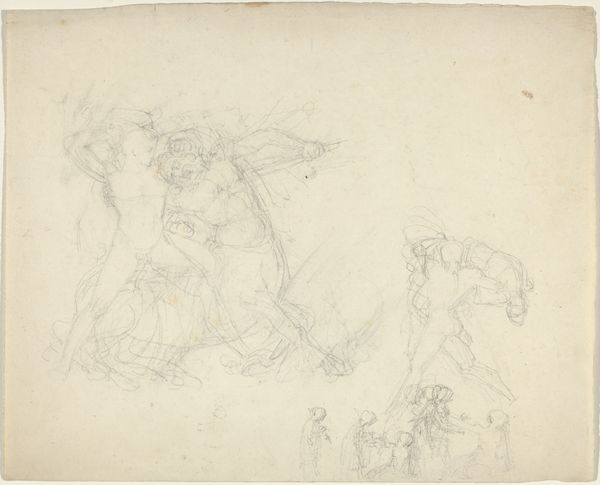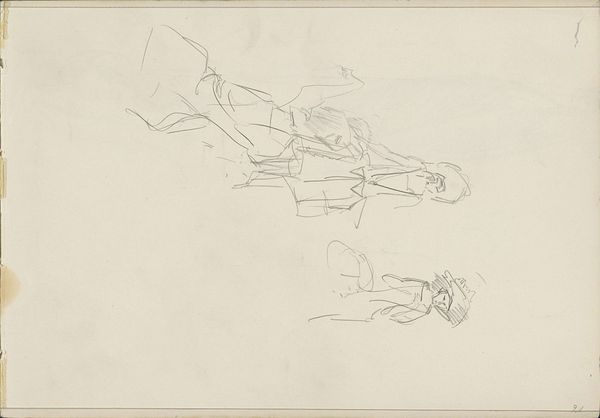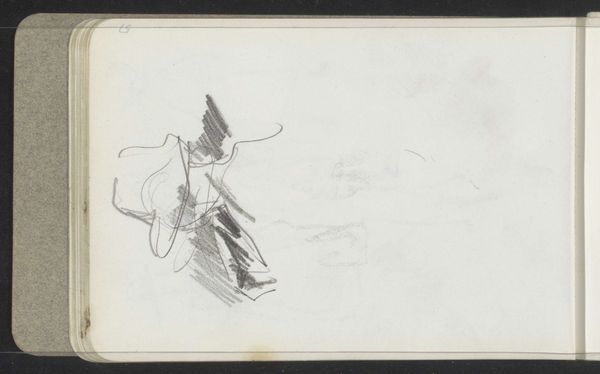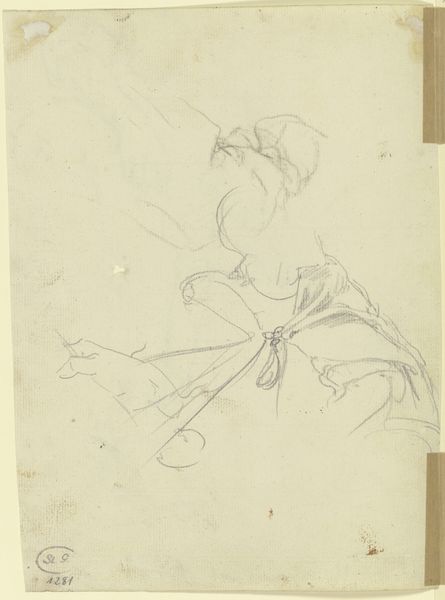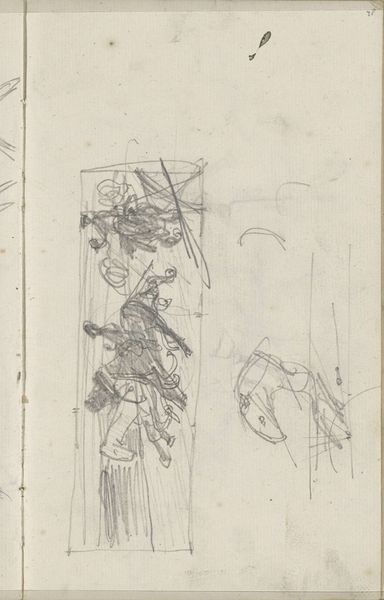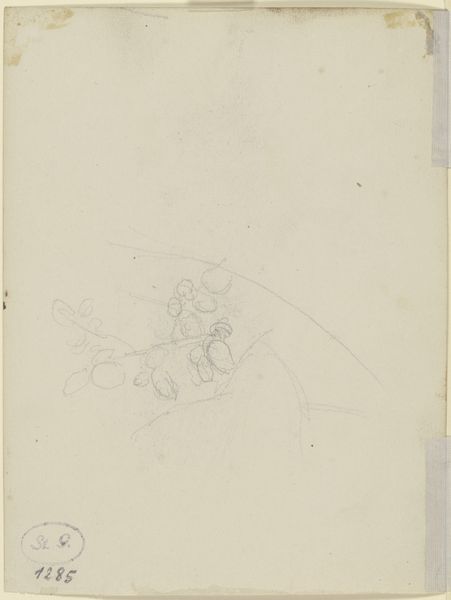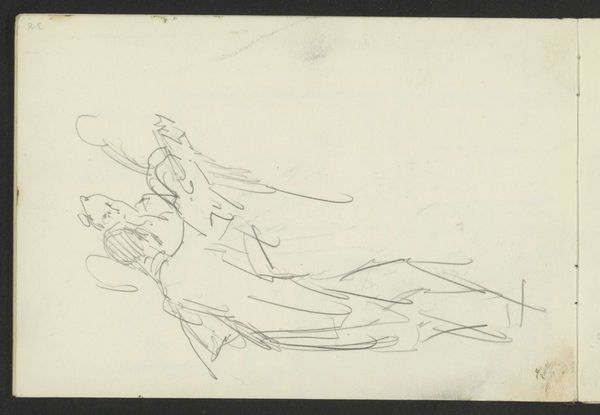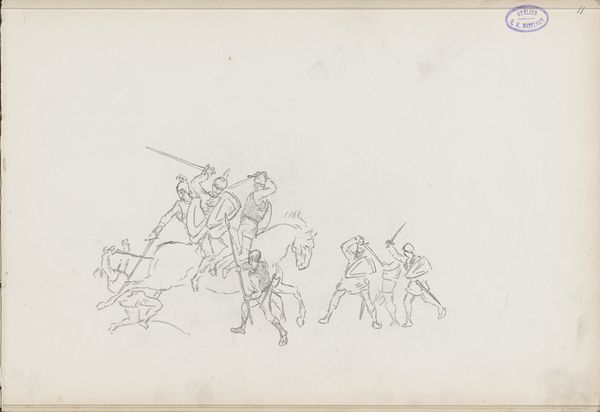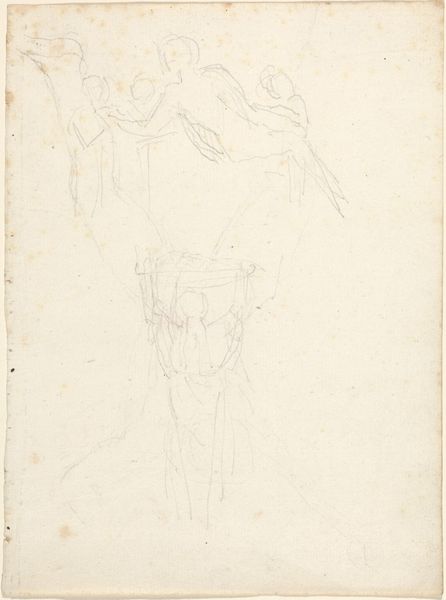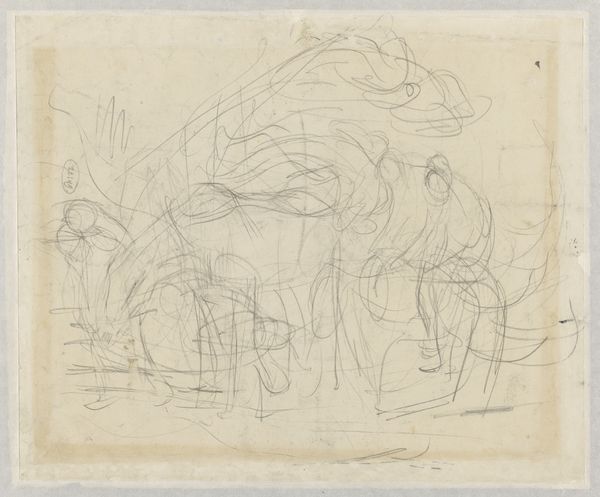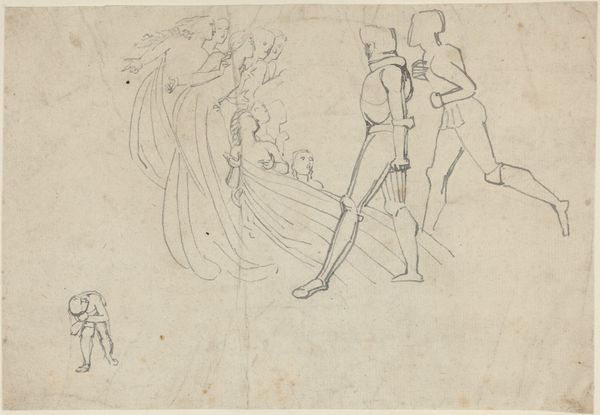
drawing, pencil
#
drawing
#
figuration
#
romanticism
#
pencil
#
history-painting
Copyright: Public Domain
Editor: This is a pencil drawing by Julius Schnorr von Carolsfeld, titled "Kain erschlägt seinen Bruder Abel," created sometime between 1843 and 1850. The figures seem caught in a dramatic struggle. What stands out to you from a formalist perspective? Curator: Immediately striking is the artist's evident focus on line and form to convey motion and emotion. Observe the dynamic entanglement of the figures; the artist’s strategic placement and direction of lines emphasize a powerful sense of physical struggle and imbalance. How do you interpret the artist's choice to leave certain areas more defined than others? Editor: Perhaps the varied linework guides our eye to the critical action, obscuring less vital details. The intensity seems heightened by that contrast. I also noticed how he uses layering. Curator: Precisely. Layering suggests depth and complexity, drawing our eye toward the more sharply defined contours of Cain's figure. Consider the emotional weight communicated through the materiality of the pencil itself; the variations in pressure articulate light and shadow, intensifying the drama. Does the somewhat unfinished quality contribute to your understanding? Editor: It makes it feel rawer, more immediate, almost like we are witnessing the event as it unfolds. Seeing the artist's process somehow enhances the emotional impact. Curator: A keen observation. We understand that the formal choices – line, layering, definition – coalesce to generate not only a depiction of violence, but also a sense of the inner turmoil and moral consequence suggested in the biblical narrative. Editor: I hadn't considered the way the unfinished quality itself contributes to the overall meaning. Thank you for pointing out those details, I learned to appreciate that it can be intentional.
Comments
No comments
Be the first to comment and join the conversation on the ultimate creative platform.

